Seeing how often I manage to update this blog at the moment, I came to the realization that if I want to cover as much ground as possible telling you about the Setouchi Triennale 2019, I’ll have to break away from chronological order, otherwise, I’ll only reach some destinations after the festival is over!
So today, we’re jumping from mid-July (my previous post) to August 23rd. It was my 18th day visiting the Setouchi Triennale this year, and we went to Teshima on that day.
Usually “we” is my family and me, but not this time. This time I teamed up with Dru from Hinomaple who had finally made it to Kagawa after having to cancel at the last minute last Spring.
Also, I’m trying something new this time. I recently acquired a GoPro camera, and you will most likely see me experimenting more and more with it on this blog. You’ll have to bear with me though, my video editing skills are almost non-existent, but that’s how you learn, right? I’m also trying to find the video editing software that’s right for me, so I assume I’ll try a few different ones. That may have an impact on the results.
OK, let’s start. We rented bicycles, and my first test with the camera was to film the whole ride from Ieura port to Karato-Oka. So, this is what it looks like.
Be warned, the video has no sound and lasts 15 minutes. It’s not meant to be a “good” or “fun” video, rather an informative one, to show you what the ride looks like, where various artworks are along the road, how long it takes to reach them and so on.
I hadn’t rented an electrical bicycle on Teshima in quite a while, and I guess, they have fallen victims to their own success to a certain extent. While in the past, I used to rave about them, I was surprised that the ones we were given this time had a pretty weak “engine”. While riding uphill was still easier than without powered assistance, it was not a breeze like it can be. Oh well, I needed some exercise anyway, but make sure you’re aware of this when you rent a bicycle for your next trip; how powerful they are may vary.
When we arrived at Karato-oka, we headed straight to Shima Kitchen to make a reservation for lunch, and despite arriving as early as possible, we couldn’t make one before 12.30pm (online reservations are now a thing there), so we rode down back to Suzuri and visited all the new art there before climbing back to Karato-oka.
The Suzuri area of Teshima is pretty new to Art Setouchi as it received its first artwork at the end of 2016. Apparently, it seems to be an area that is going to be developed more in the future (for better or worse) as it has a second artwork this year. Also, they were busy renovating a house right by the beach, I assume it’s a future artwork (however, it’s only an assumption from me).
It’s understandable that the place has become desirable, it has one of the most beautiful beaches on Teshima while remaining easily accessible, and the beach is right by a small village that can provide empty houses.
The first artwork of the day is a new one. It’s called Umitota by Akira Minagawa & Shinichiro Ogata. It’s not so much an artwork than a house (as a reminder, the Setouchi Triennale is as much about art as it is about architecture), and more precisely a rental house.
It’s possible to spend the night there (even during the Triennale, but you need to be out way before it’s open for visits), and it is indeed a pretty beautiful house. I wouldn’t mind staying a few days there if I could afford it. And of course, one cannot take pictures inside, despite the fact that it’s not actually a Benesse artwork. You can see what it looks like inside, plus rates and more on Umitota‘s official site.
It belongs to C.H.C Circle House Corporation, the same company that manages the Restaurant by the Sea, the White Dormitory and more. I do find it a bit odd that Umitota is included in the Triennale as the two others never were a part of Art Setouchi, and I can’t help but feel that its inclusion is some sort of promotional thing. And one can see why. While you’ve probably heard of Restaurant by the Sea if you’ve been to Teshima (because it’s hard to miss), you have probably never heard of the White Dormitory despite it being around for quite a few years. So, yeah, Umitota being part of the Setouchi Triennale gives it the visibility that its predecessor didn’t get. Of course, the fact that the company is owned by Soichiro Fukutake’s sister may help.
Note, that I’m not complaining; it allows us to discover a quite wonderful house. Also, note that what makes it really interesting is indoors, the outside is quite bland in my opinion (maybe it needs more plants).
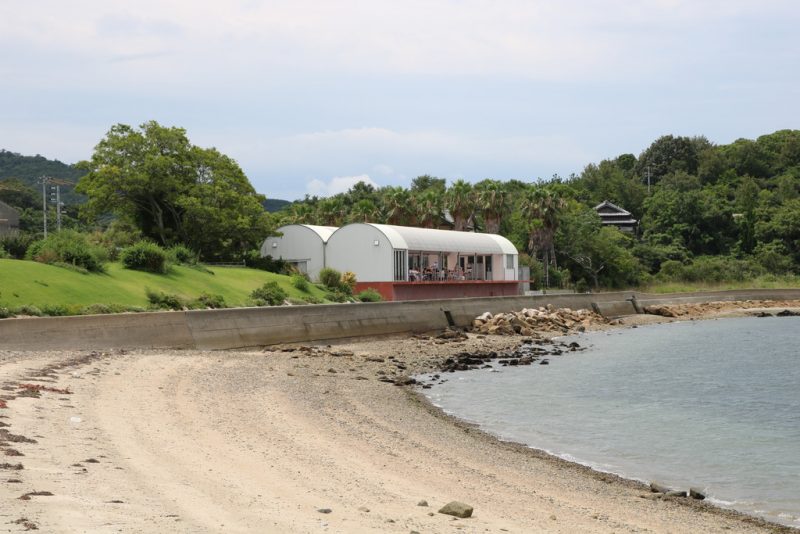
Right next door Umitota is Teshima Seawall House by Anri Sala that I had never seen despite the fact that it opened late 2016.
It’s a Benesse artwork, so you won’t see what it’s side, but I’m sad to say that it was quite underwhelming. Some sound installations and a few drawings, but nothing to talk home about (and not much to talk on a blog about either, especially when you can’t show anything).
So, let’s move on, and head a few hundred meters uphill to the former site of an orphanage that used to be quite important in its days. I need to double-check my sources, but orphanages were not really a thing in Japan before the Meiji era, and this one was started in 1947 after the war. It became quite important and famous especially because of the quality of life children had there. At a time when Japan lacked everything, children on Teshima were well-fed and well-taken care of, and the island showed them why it’s named “The Island of Abundance” (this is what Teshima means in Japanese). I’ll tell you more about it, once I’ve found the detail again.
The orphanage was closed in 2015 to be relocated to Sakaide, still in Kagawa Prefecture, but on Shikoku (note: I had no idea it remained open that long, but yes, I remember seeing some activity there in the past). The building was renovated by Ryo Abe (and friends?) of Shima Kitchen (and more) fame, and reopened in 2017 as a guesthouse, café, and public bath named Teshima Mamma (pronounced “Mam Ma” not “Mama”), and since April, a small playground that is part of the Triennale under the name Korogaru Park in Teshima (with “© Yamaguchi Center for Arts and Media” added to the official name for some reason). It was designed by Kohei Izutsu & Daiya Aida.
Teshima Mamma was unfortunately closed on that day, so I’ll have to visit it another time.
The park is supposed to “spark the imagination”, but I have to admit that I find it quite lacking. Maybe it’s a long term project and more and more things will be added in time, but I’m not sure, it is my understanding that it’s supposed to be temporary. We’ll see in a few months.
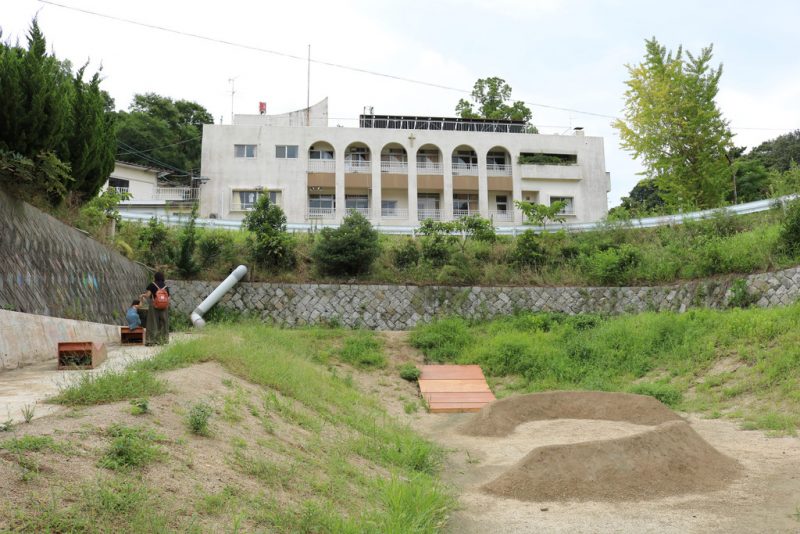
The park has one more feature. A wall, that used to be some sort of dam (the park being a former reservoir), and where one can write or draw on with chalk that is provided.
Unfortunately, the wall had been “hijacked” by the political turmoil that has taken over another part of Asia:
I’m not too sure what to think about this. I mean, let’s avoid any misunderstanding, I’m 100% with the protesters in Hong Kong (and if my opinion mattered on the subject, I’d be 100% in favor of an independent Hong Kong – I’d settle for a democratic one, though – but it’s not for me to decide, it’s for the people of Hong Kong). However, I’m not sure that an artwork on Teshima is the right place to export the debate to.
Alright, let’s move on to Karato-oka where we arrived next.
As we still had some time before lunch, we walked around the village to some familiar and less familiar places.
This is the Karato spring. It is said to have some of the best water in the area, to the point that old locals kept on using it for drinking until years after their houses were connected to running water. You can still drink it, and it’s always a good occasion to fill out bottles when you’re there.
Its water is also used for all the rice fields downstream.
Right next to the spring, a veteran artwork of the Triennale that has been featured a few times on the blog, Noe Aoki‘s Particles in the Air.
By the way, most people seeing this artwork for the first time take this picture ⮭ and move on thinking that it was not that interesting after all.
They just committed the number one mistake that you must not commit on the Setouchi islands and that I see more and more people committing. That is, just flying from artwork to artwork without stopping to enjoy the surroundings, without looking at how the artworks fit within said surroundings, especially if it’s an outdoor artwork.
For example, Particles in the Air becomes interesting when you get close, and when you start looking at it from different angles, not just from the road.
See:
These are just five examples, there are many more, and the longer you spend, the more you’ll enjoy it, believe me.
Also, I like to imagine that the whole structure is some sort of sports arena for local fairies, and remember, enjoying art is not about the artist’s intentions or message, it’s about finding the ways in which it speaks to you.
Right next to Karato’s spring and Particles in the Air is a place where I had wanted to go pretty much since it opened a couple of years ago, except that it was always closed every time I was in Karato lately.
It’s the Usaginingen Theater (the Rabbit-man theater). It’s totally unrelated to the Setouchi Triennale and it’s managed by Emi and Shinichi Hirai a couple of performing artists who have traveled the world before settling down on Teshima. I’ve followed them for quite a while on social media, and we have a few friends in common, but we never actually met.
It was not for this day either, as they were not in the theater when we stopped by, but at least the theater was open and we could take a peek inside:
During the Triennale they have a (daily?) show at 1.30 pm, unfortunately, we couldn’t attend as Dru had to return to Takamatsu a bit early on that day. Hopefully, I’ll get to meet them in October, because it’s seriously overdue.
Lunchtime was getting closer:
Shima Kitchen looks a bit odd with its new roof. I neither like it, nor dislike it. I guess I’ll just need some time to get used to it. If you’re discovering Shima Kitchen for the first time, just know that the roof is remade every few years, and that for the past nine years it was dark brown, so it’s quite a change (you can see what it looks like with a dark roof on these older posts).
Inside, nothing has changed, and I was surprised that it didn’t feel crowded at all, neither did we feel rushed. This online reservation system is actually working pretty well to unclutter the waiting lines and such. Also, as you order your food when you make the reservation (regardless of how you make that reservation), it comes just a few minutes after you’re sat.
If you’re not too familiar with Shima Kitchen, it’s a restaurant, but a very special restaurant. First, the building itself is an old house that has been renovated and remodeled by architect Ryo Abe (he won a bunch of prizes for this). And the restaurant serves food that’s entirely local. It has only two lunch sets: the Shima Kitchen Set and the Keema Curry Set, and they have the particularity to have been designed as a collaboration between islanders and chefs from Marunouchi Hotel in Tokyo. And they’re cooked by them too.
On top of serving amazing food that changes according to seasons, catches of the day and more, Shima Kitchen is one of the important places of the Setouchi Triennale in my opinion, one of its success stories of island revitalization. It is in my eyes as important as the Teshima Art Museum for the island (and probably more important for the locals).
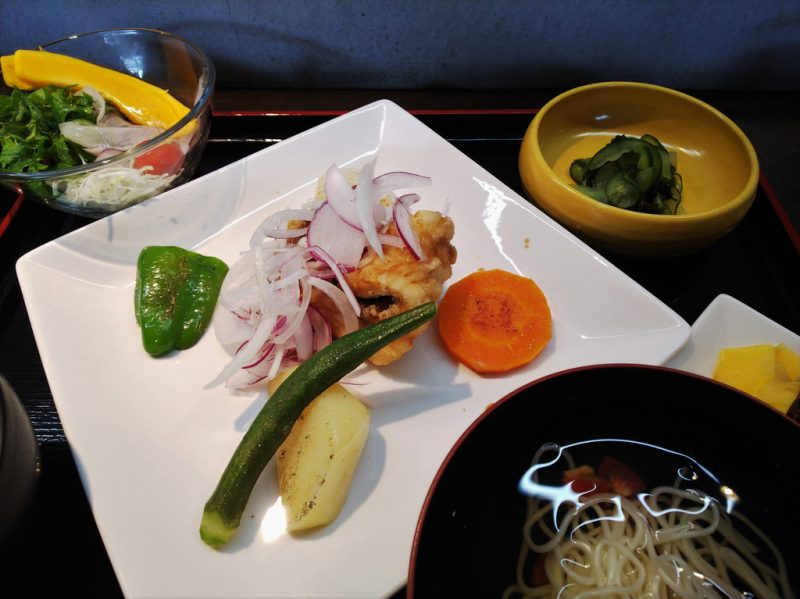
Next, we decided to go to Koh (sometimes romanized as Kou, but let’s be honest, if I wrote it this way, you’d pronounce it “cow” wouldn’t you?), Dru will correct me if needed, but I think it was his first time there.
I’m warning you right away the following video is quite underwhelming. That’s still me experimenting with things. Also, the road from Karato to Koh offers some of the most beautiful landscapes in the area, except that… I either didn’t film that part, or the video didn’t save for some reason (I maybe should have bought a faster SD card, I will make that change before my next outing).
Two more things about the video now that you’ve watched it:
- Do not ride your bicycle on the right-hand side of the road in Japan. Yes, I know, you’ll see some Japanese people do it. Well, they shouldn’t. Especially, don’t do it on Teshima for safety reasons. Paradoxically, this is the reason why I’m doing it at the very beginning of the video. Dru didn’t know where we were supposed to turn, I saw the people coming our way, and there isn’t much visibility in that curve towards the Teshima Art Museum. So actually, right there, crossing the road to be on the left side, going straight for just 50 meters and crossing it again for turning right, with the people walking and a vehicle that may come our way with little visibility, was more dangerous than just staying on the right side for 50 meters.
- The snake. It’s a pretty common species in the area, and it’s pretty harmless. Yes, when you go a certain distance away from human settlements on the Setouchi Islands, you are more likely to encounter wildlife. Most of it is safe. The only potentially dangerous animals are wild boars (I’m almost surprised that we didn’t encounter one on that day), but usually, they smell you before you see or hear them. If you encounter one, just let them be. They’ll be more scared of you that you’ll be of them, and even less eager to encounter you than you are to encounter them. In the context of visiting the islands, they can only be dangerous if you act in threatening ways… according to them. That is shouting, walking towards them, sudden actions and such. Once again, if you encounter one, let it be. It’ll just walk away if it doesn’t run away.
So yes, I’m bummed that for some reason I didn’t record the best part of the trip from Karato to Koh, but at least I managed to take a few pictures.
Once in Koh, we visited Sputniko‘s Eight Million Lab.
I remember not really liking it the first time I went, but I must admit that it has been growing on me more and more. During that trip, I even learned that the “fake lab” is not entirely fake, as the incubator and the moths are real (as in alive for the latter). Pretty neat.
Apart from that, you know the drill, it’s a Benesse artwork, so no pictures inside.
The concept of the place is that it’s a science lab and a Shinto shrine at the same time, and its goal is to recreate Japanese myths through science. Namely, creating a “real” red thread of love. Some silkmoths have been genetically modified with red coral and oxytocin, and the silk they produce is indeed pink and not white. Is this the first step to an actual red thread of love? Well, you decide.
If you can’t make it to the Eight Milion Lab, just now that the video that’s playing inside is available on Youtube (but watch it here only if you can’t go there, otherwise it’s better to see it on-site):
Our final stop of the day (after stopping in Koh’s port that also has a great view of the Seto Inland Sea) was Chiharu Shiota‘s Distant Memory.
The last time I went to Koh, last Fall, I was pained to see that the artwork’s “tunnel” had collapsed. Indeed, it was certainly not made to last this long, and you couldn’t walk through it since 2016 at least. Last Fall, I thought I had seen the end of Distant Memory and the official list of artworks this year seemed to confirm it. Except that, surprise! It has been renovated, and Distant Memory is alive and well, you can even walk through the renovated tunnel again!
However, while I had heard of Distant Memory “being dismantled soon because it’s too damaged” since roughly 2013, this time it’s for real. This amazing artwork that’s been there since the very first Triennale will be officially dismantled after the current Triennale is over. 🙁
It was odd to know that it was one of the last times I see it.
The thing is that it’s going to be replaced by another work by Chiharu Shiota, this time as a collaboration with Tsuyoshi Tane. The interesting part is that it will take them three years to create this artwork. The first steps are exhibited inside the building.
What is it going to be about? Your guess is as good as mine. In the exhibit, Teshima’s geology seems to have some sort of predominance. Is this a hint?
As previously mentioned, Dru had to take an earlier boat back to Takamatsu. I could have stayed on the island longer, but as it had been a long week, I figured that a little rest wouldn’t be wasted. So, we pretty much headed back straight to Ieura Port after leaving Distant Memory.
We didn’t stop at Shinro Ohtake’s Needle Factory, but I took a picture from the street. Pictures are not allowed inside (you know the drill), but, I was not inside, I was actually in the street, so… 😉
Our final stop was a pretty peculiar “artwork”, Teshima Islandscape by Koji Kakiuchi.
What can I say about it? It’s really just scaffolding with benches that allow you to enjoy the view of Ieura Port and the sea. I’m not exactly sure how this is art, but I know that the view is more beautiful than many artworks, and I assume that’s the point the artist is making. However, we couldn’t climb on it for some reason on that day (I think it was closed during the summer session because of heatstroke risks when spending time on it).
Soon, the boat bringing us back to Takamatsu did just that, and this is how ended our visit of Teshima during the Summer session of the Setouchi Triennale 2019.
To be continued…
And if you’ve missed my previous reports of this year’s Setouchi Triennale, here are all the ones I’ve written until now:
- Part one – Shodoshima
- Part two – Shamijima
- Part three – Ogijima
- Part four – Shodoshima
- Part five – Children’s Day on Ogijima
- Part six – Ogijima
- Part seven – Megijima
- Part eight – Umaki, Shodoshima
- Part nine – The Shore Where We Can Reach on Shodoshima
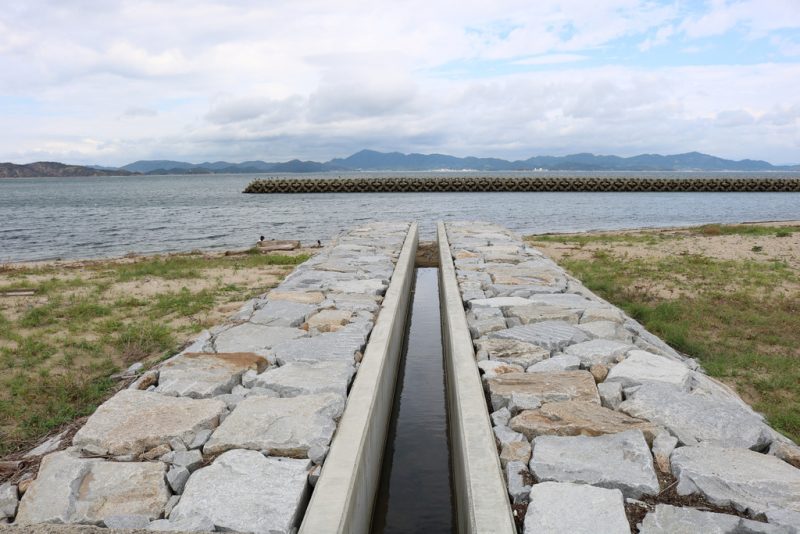
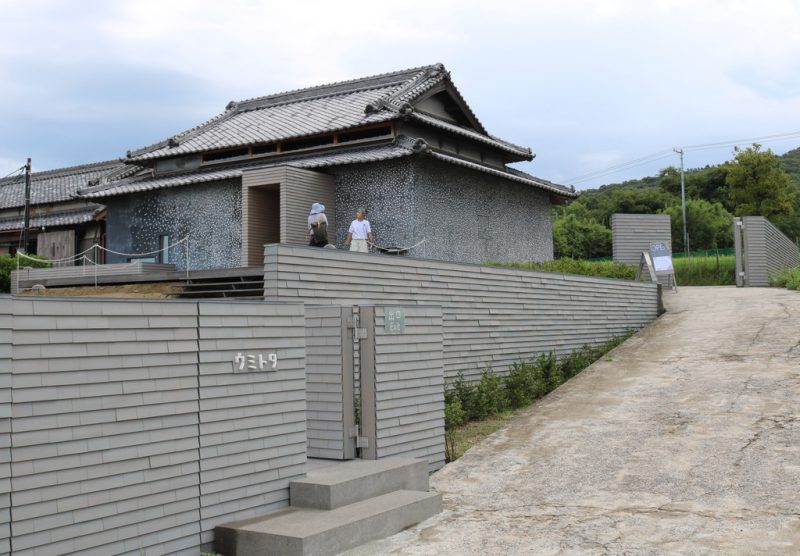
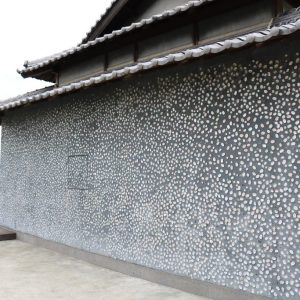
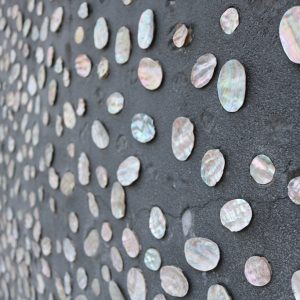
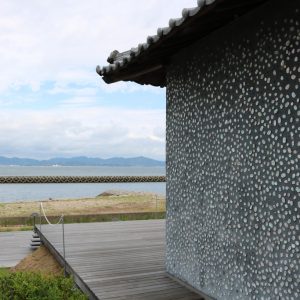
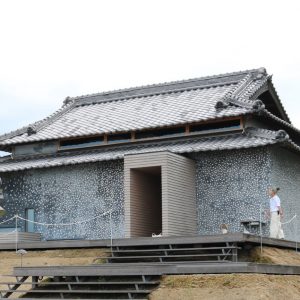
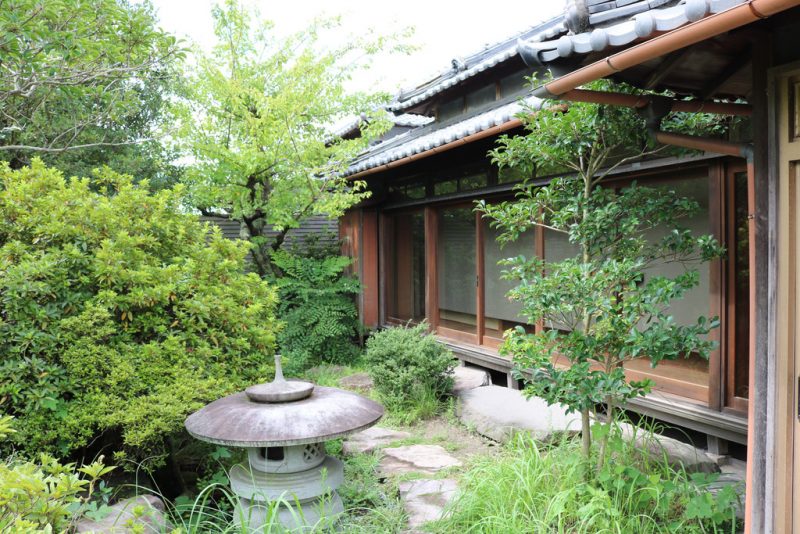
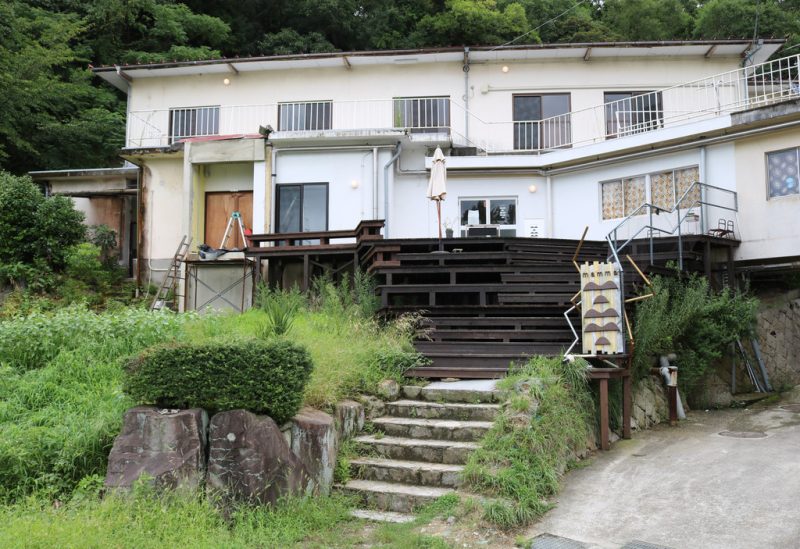
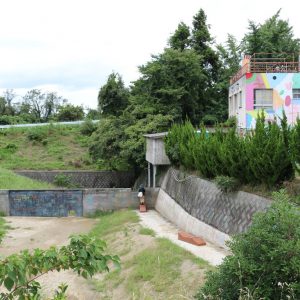
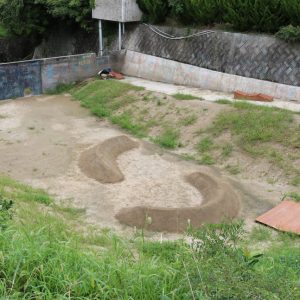
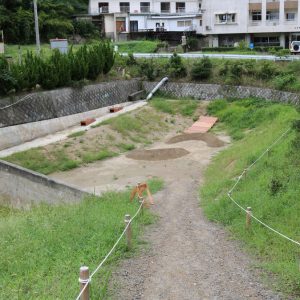
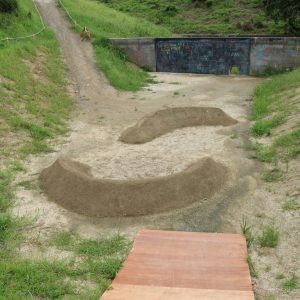
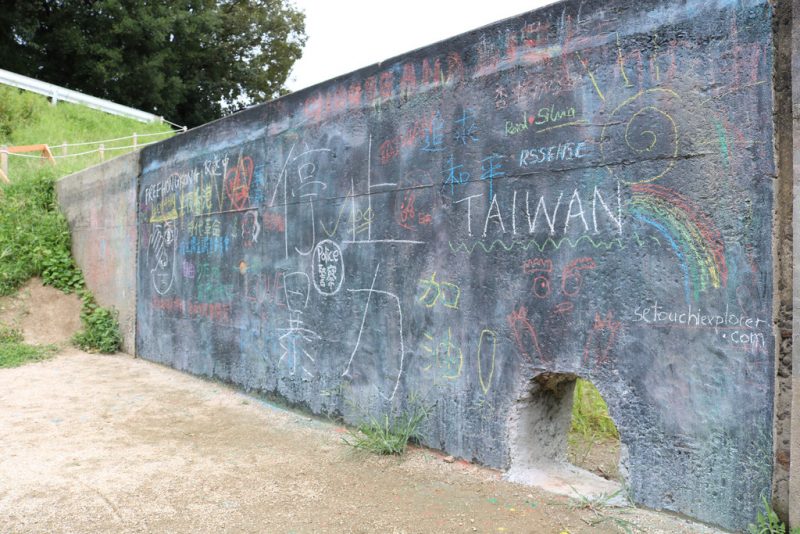

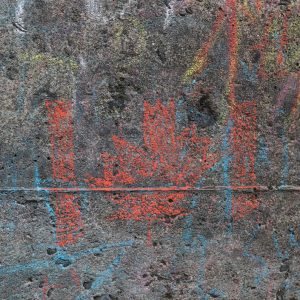
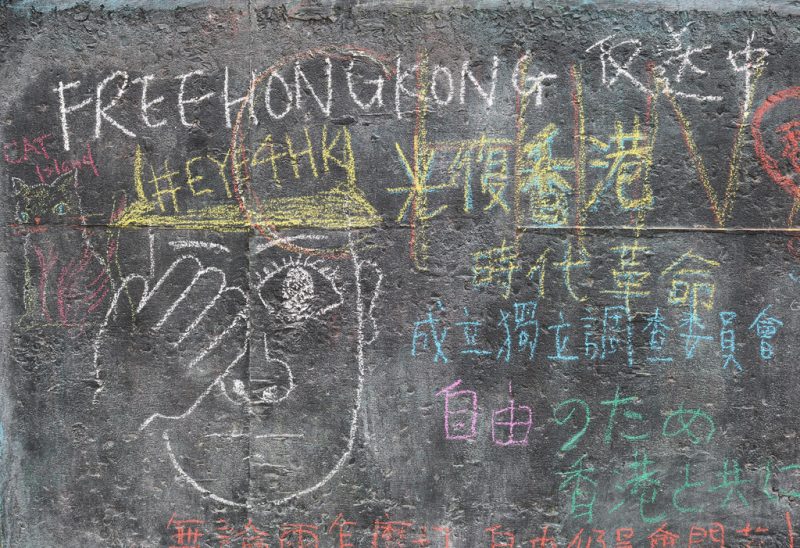
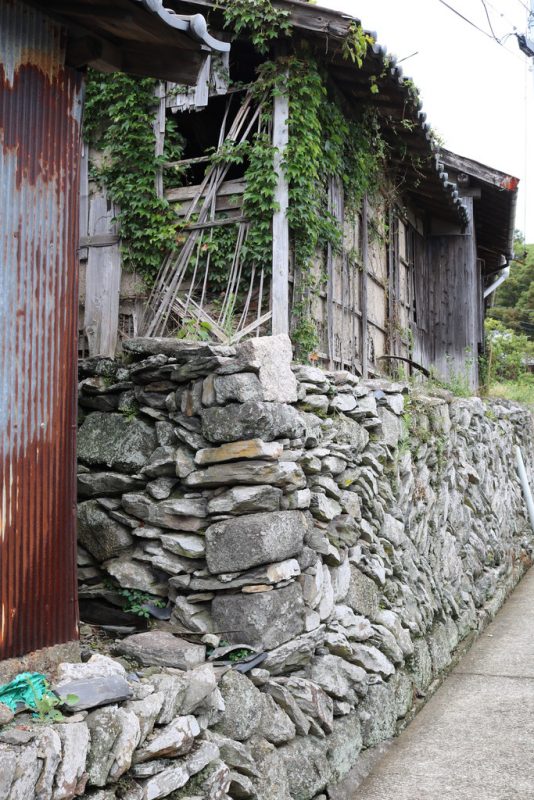
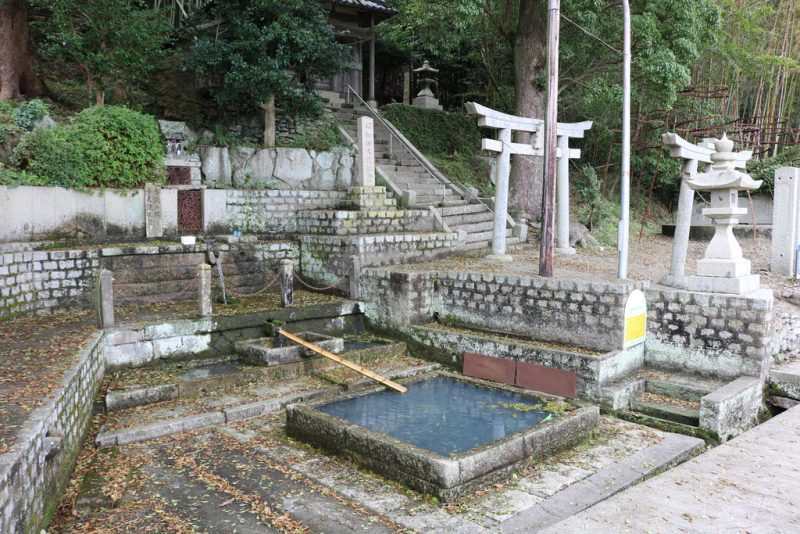
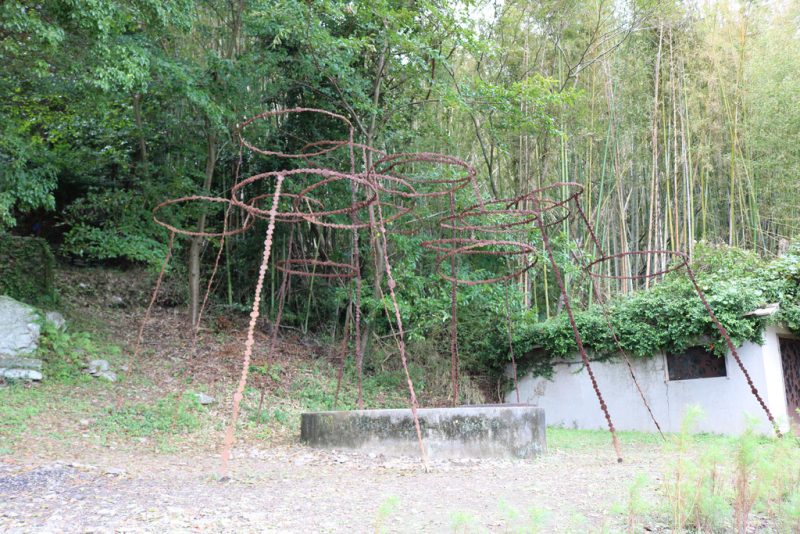
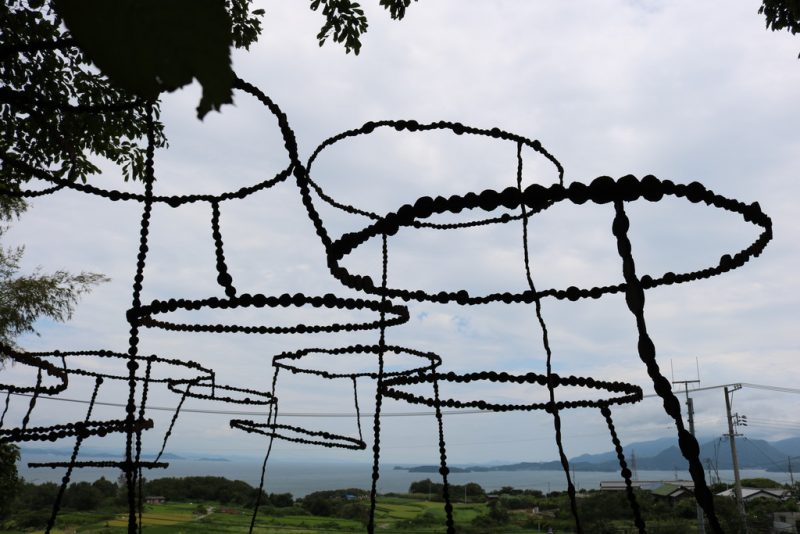
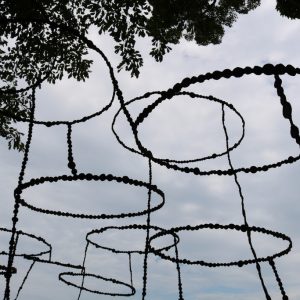
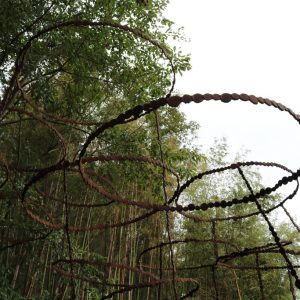
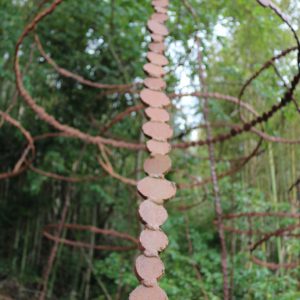
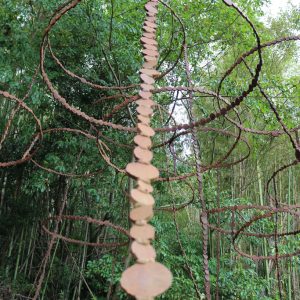
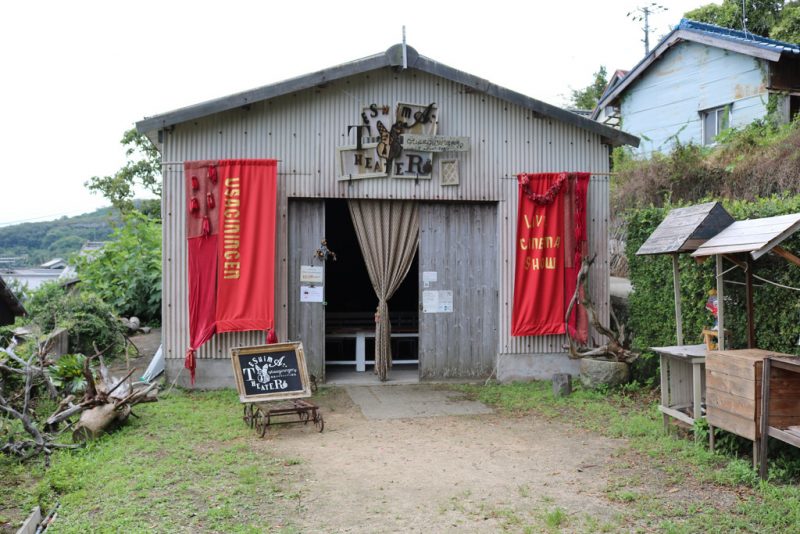
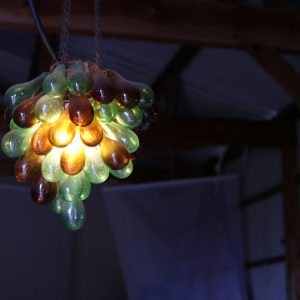
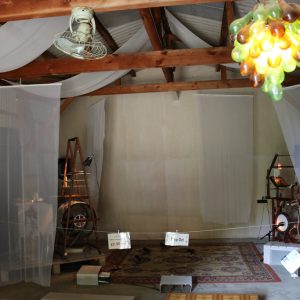
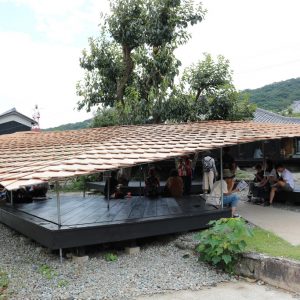
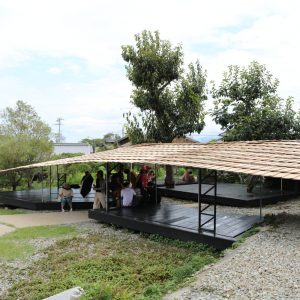
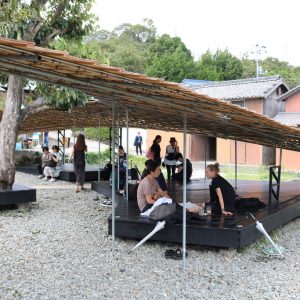
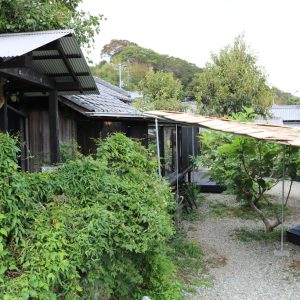
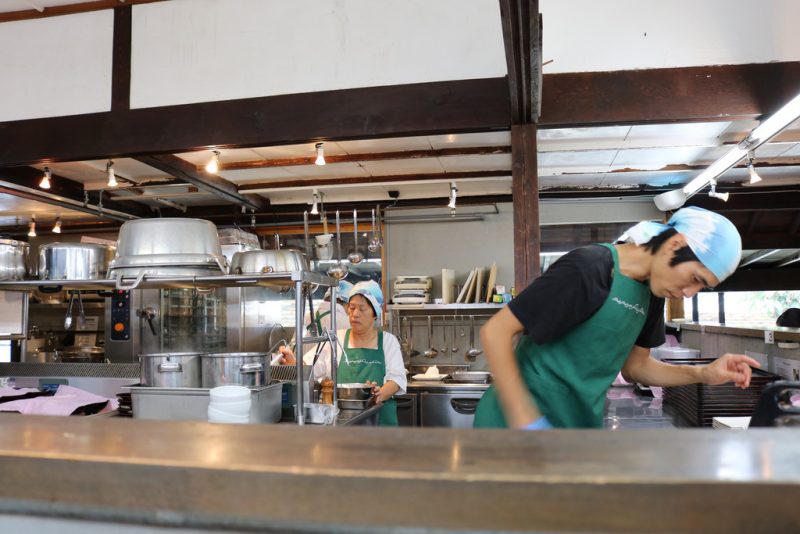
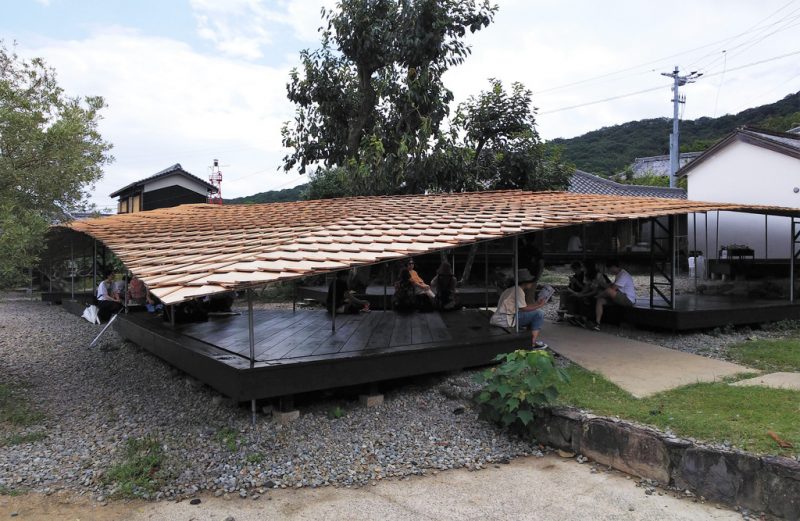
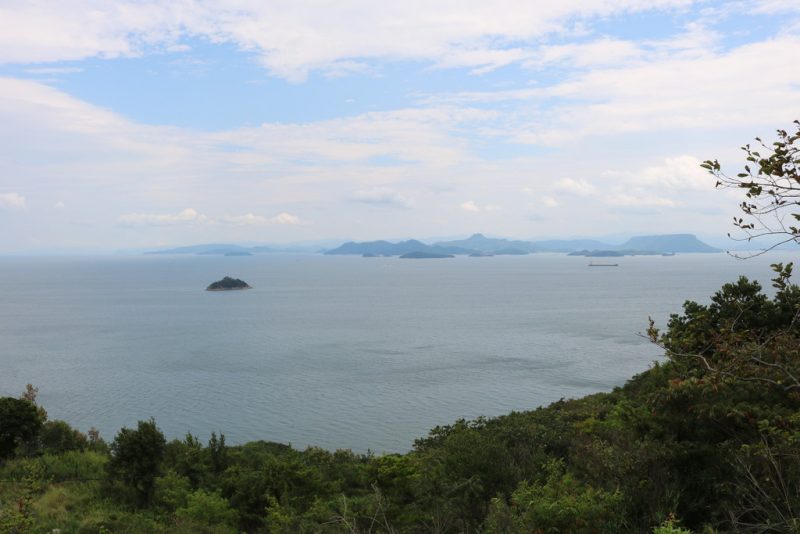
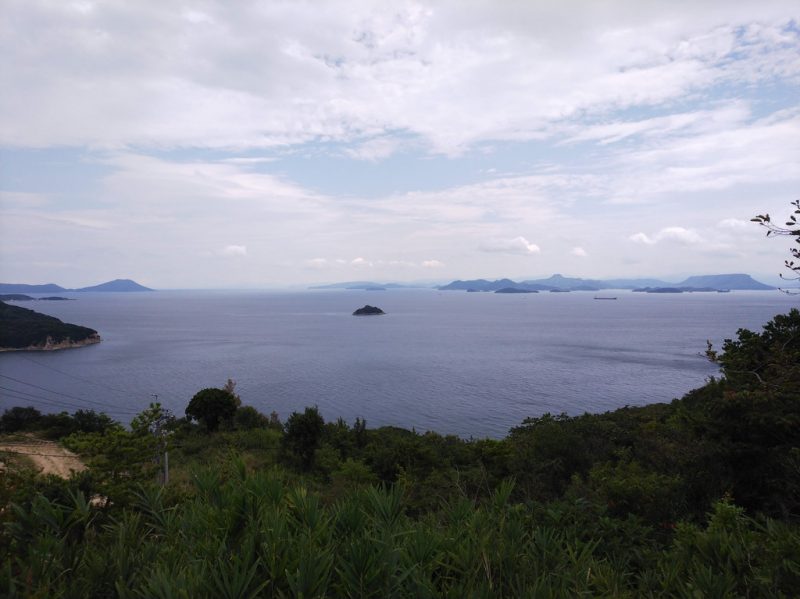
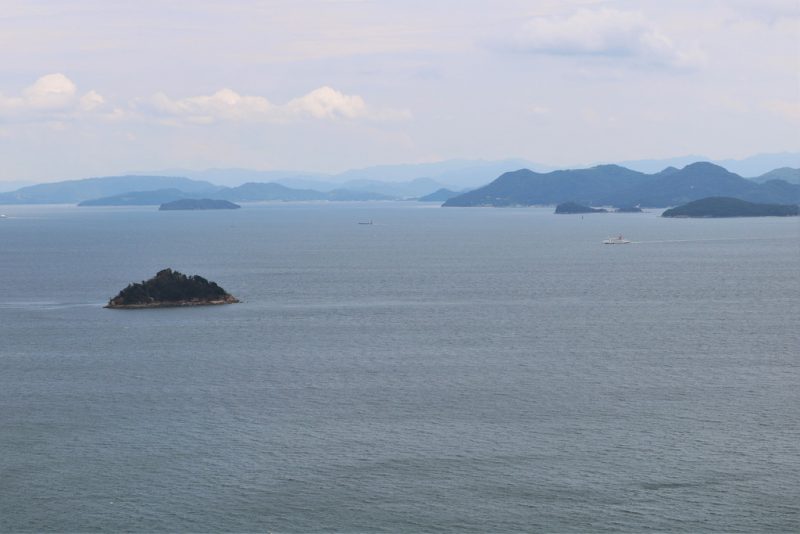
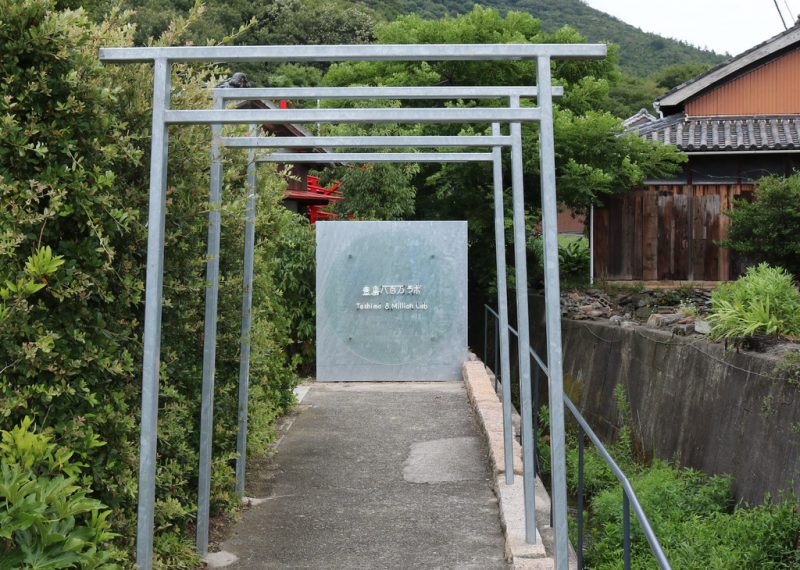
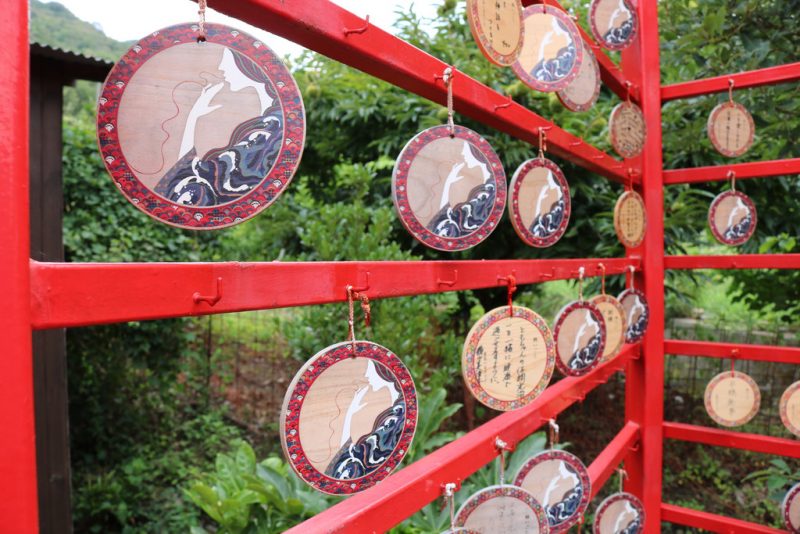
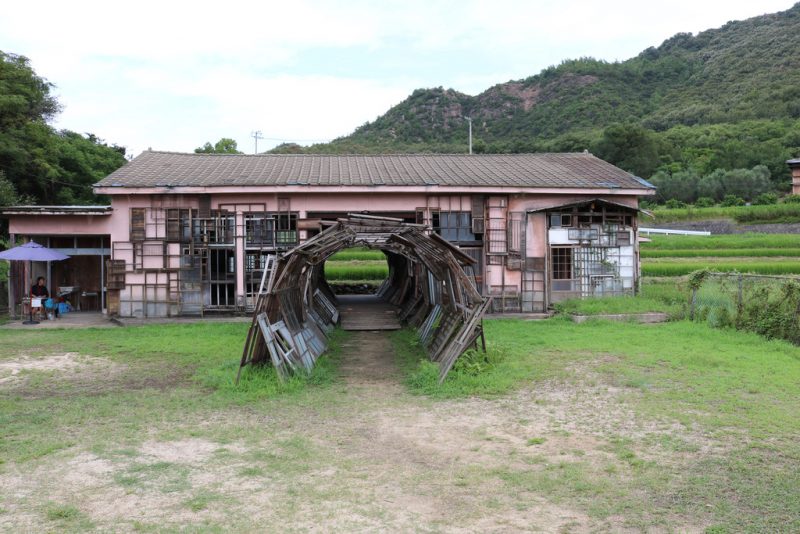
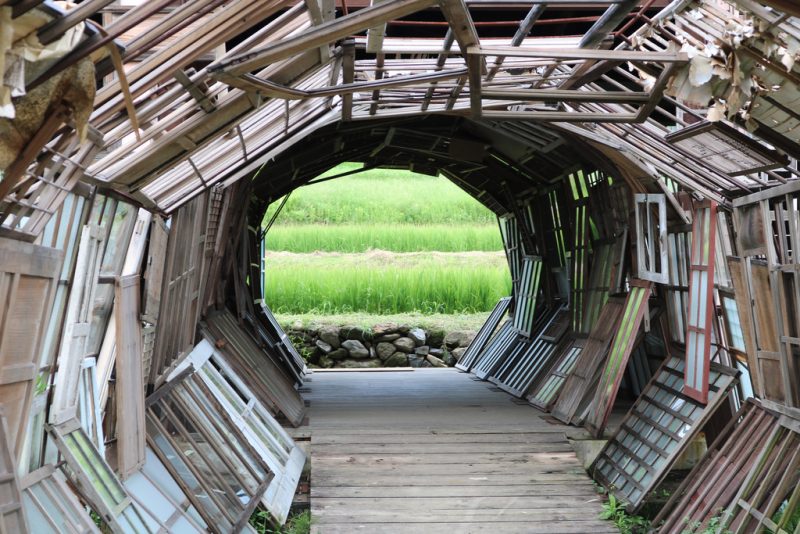
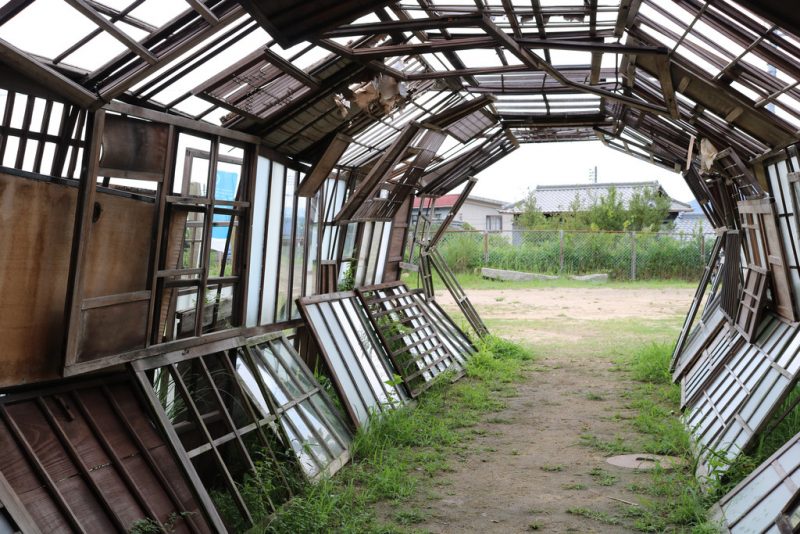
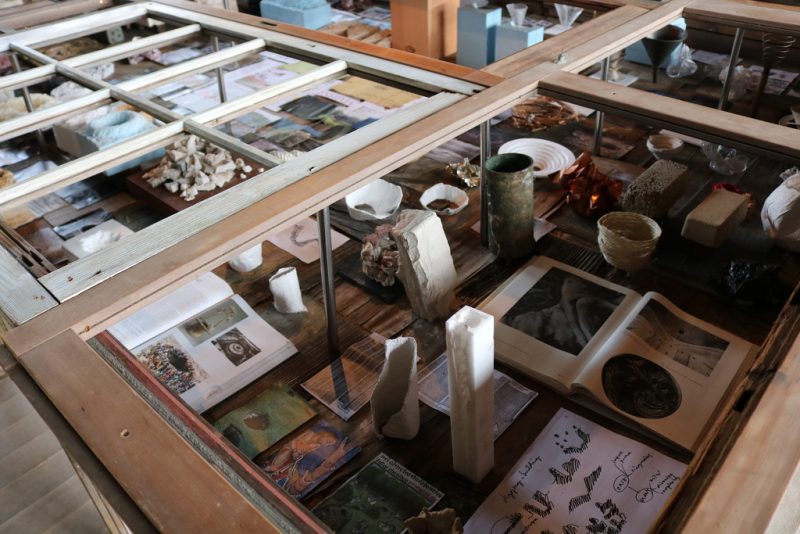
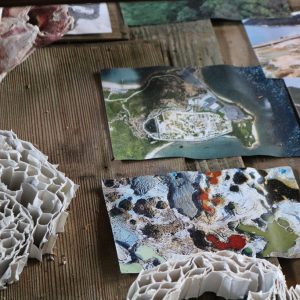
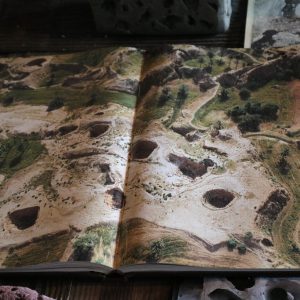
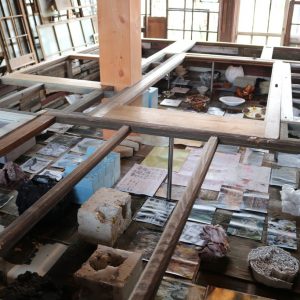
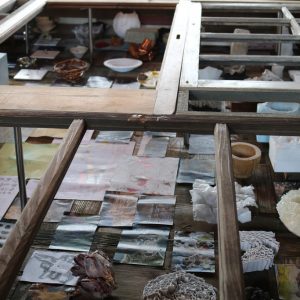
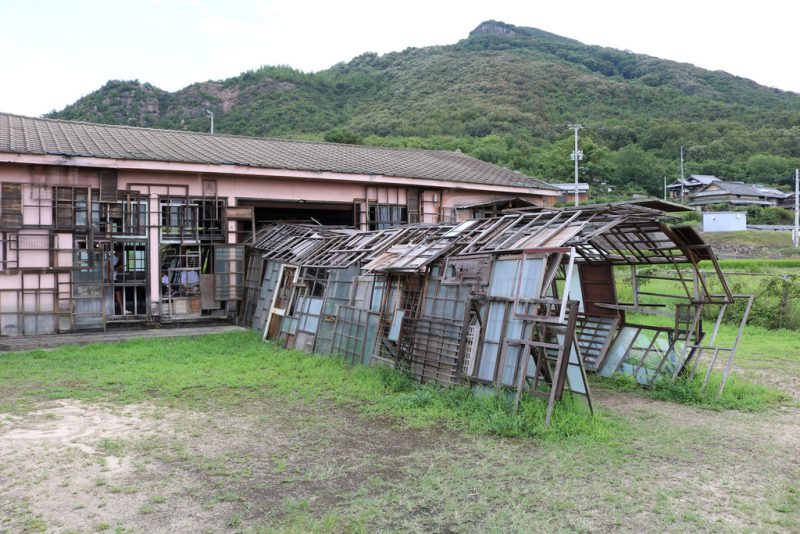
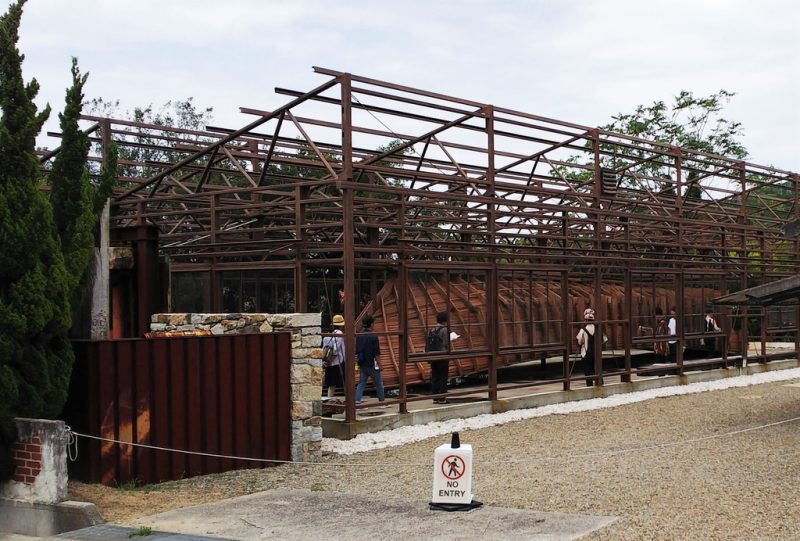
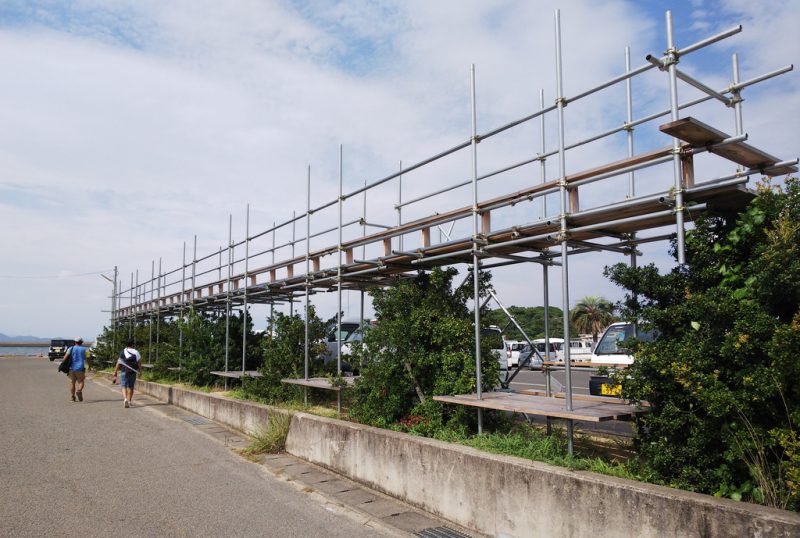
First, the second video is much better with music. You can still add music to the first one if you want, through YouTube. 🙂
For the second video, I didn’t realize that was what you were doing. I just kept an ear out for motor sounds and such. We weren’t going fast enough to worry, at least for me.
Kinda sad you didn’t get the second half of the trip to Kou. I really enjoyed scaring you and being slightly scared myself. 😉
Just one last note, it was my second time in Kou. Second visit to Distant Memory too.
The problem with the first video is that it’s too long for the music that’s available on YouTube (and either it’s a bug or a lack of feature, but I can’t put two clips back to back).
It’ll stay this way for now, I’d rather spend time on more interesting videos.
For the second video, do you mean, me keeping right or the snake?
For the keeping right instead of left thing, that was mostly because of the people walking towards us, I figured it was just easier that way. Two foreigners doing something unexpected had the potential for freaking them out. 😉
I really don’t know what happened with the second leg of the ride to Koh. Did I just not press “record” or was there a problem with saving the video to the card? I guess we’ll never know.
I meant the riding on the right side, not the snake. Oh well, doesn’t matter either way, for the people that is.
For the second half, I’d say you didn’t press record. I don’t remember you recording it or staring it…